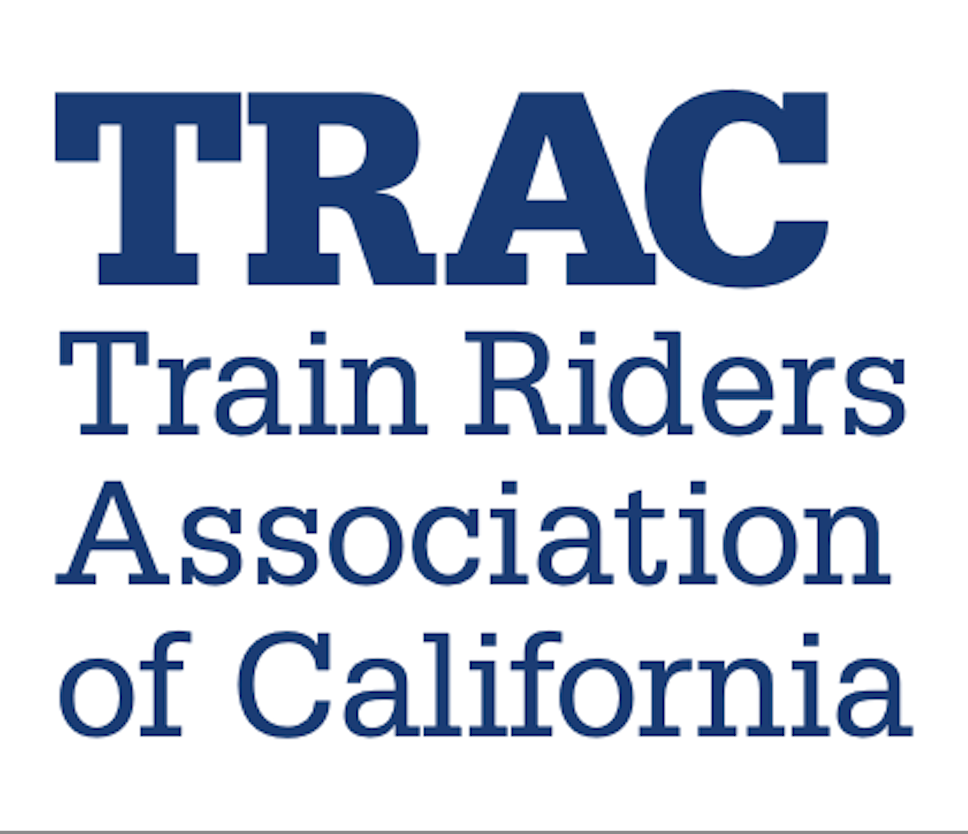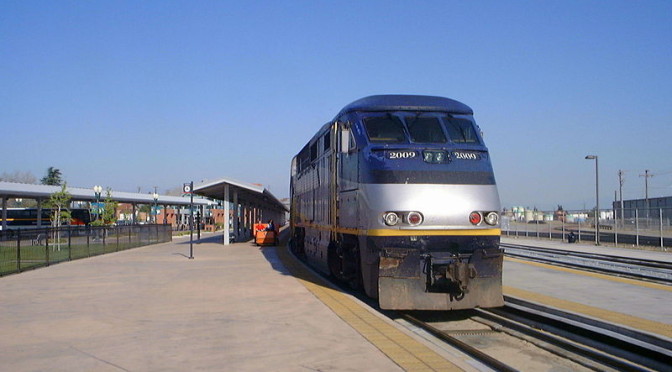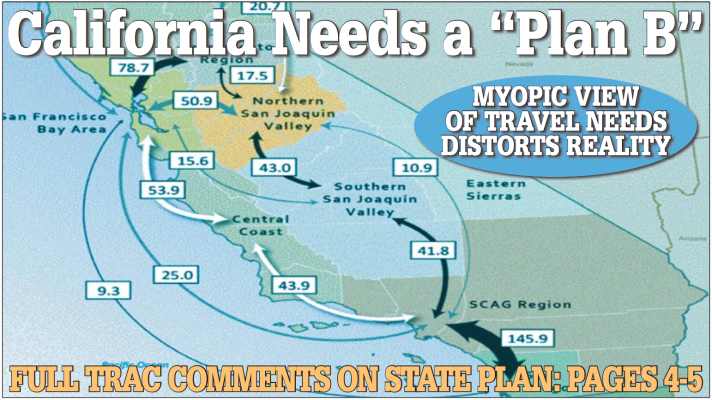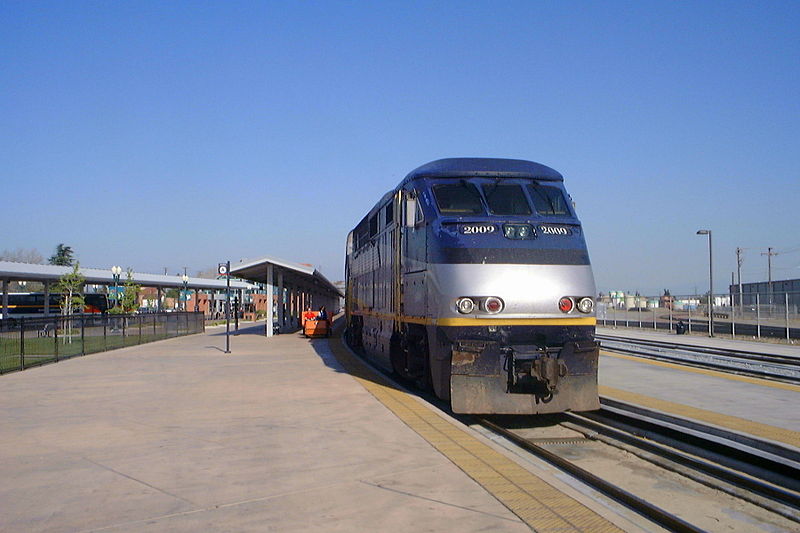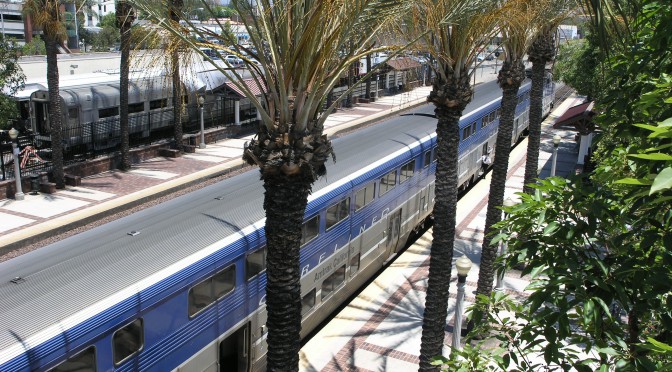California’s High Speed Rail Controversy Resembles Debate Over Streetcars
Photo: A San Joaquin train at Bakersfield
On Monday, September 29th, the Sacramento Bee published an Op-Ed by TRAC (see http://www.sacbee.com/2014/09/29/6743679/viewpoints-heres-a-better-high.html) pointing out that
California High Speed Rail Authority (CHSRA) Executive Director Jeff Morales admits that a high-speed rail line with a straight shot route from San Francisco to Los Angeles could conceivably have been accomplished privately. (http://www.bizjournals.com/sacramento/news/2014/09/09/why-does-californias-high-speed-rail-need-public.html).
Continuing from our opinion piece,
He [Morales] noted dismissively that such a line “would have bypassed all those population centers” in the Central Valley, Antelope Valley and Gilroy. “All those population centers” however, when added together, constitute less than 10% of California’s population. So why would the CHSRA plan to build a route through these cities at enormous cost, if these locations don’t have that many potential passengers?
This resembles the ongoing argument over streetcars, e.g., “transportation vs. development.” For example, see http://www.citylab.com/commute/2014/10/hey-streetcar-critics-stop-making-perfect-the-enemy-of-good/380913/.
The CHSRA plan is designed to serve development potential in places like Gilroy, Los Banos (potentially), a string of Central Valley cities and the Antelope Valley. Unfortunately, the current HSR plan includes doglegs to these areas adding significantly to travel times, compared to the “straight shot route” advocated by TRAC via the Altamont Pass, I-5 corridor and Tejon Pass. CHSRA’s preferred routing makes it physically impossible to meet the HSR bond requirement for a 2 hour, 40 minute travel time between downtown San Francisco and downtown Los Angeles.
David Alpert in the Atlantic CityLab linked above says:
Matthew Yglesias wrote at Vox that streetcars aren’t worthwhile unless they have a dedicated lane. He called the streetcar on H Street in Washington, D.C. “the worst transit project in America.” Respected transit expert Jarrett Walker agrees, proclaiming that “streetcars mixed with private car traffic are overrated.”
And on this very website, Eric Jaffe pointed out that most of the newer U.S. streetcar systems, with a few exceptions, aren’t running frequently enough to meet the usual standards of good mass transit.
And Jarrett Walker points out the political limits of the Portland Streetcar (http://www.humantransit.org/2014/10/are-streetcars-in-traffic-skeptics-sacrificing-goodness-for-perfection.html),
The streetcar has been extended up to the limits of usefulness for such a slow-by-design service (about 3.5 miles). But there are no serious proposals for taking cars out of its lanes for enough distance to matter, nor is there much energy behind extensions. Why?
In Portland, support for streetcar spending has collapsed. A recent Bureau of Transportation poll found that only 38% of Portland residents would assign a more-than-neutral priority to further expansions of the streetcar. The same number for more frequent bus service is 67%. (Light rail, in exclusive lanes by definition, is at 59%)
The Portland Streetcar has taught Portland residents a lot about what’s really matters as you define an “imperfect good.” Listen to what they’ve learned: Frequent, useful, reliable transit — using tools that scale to the scale of the whole city — is the “imperfect good” that matters.
Historically, in the U.S. most promotion of the Portland Streetcar and other lines have focused on their development impacts, not improving transit speeds, frequencies or reliability. While encouraging new walkable development around transit stops in downtown and other areas is desirable, expensive rail transit lines should also actually bring significant improvements in transit service.
In a similar vein, what Jeff Morales has admitted that in the current CHSRA plan for high speed rail, development potential has trumped improved transportation and the potential to obtain private investment to reduce the burden and risk to taxpayers.
An additional irony is that those arguing in favor of the current CHSRA plan (for example, see the California High Speed Rail Blog by Robert Cruickshank at http://www.cahsrblog.com/2014/09/tracs-unfeasible-alternative-hsr-plan/) have fallen for the “Fresno Fallacy.” That is, “all HSR trains have to serve Fresno” despite the fact that trips between Fresno, the Bay Area, Sacramento and Southern California in less than three hours would be possible with 110 mph upgrades to current service and the more efficient HSR routings via the Altamont and Tejon Passes.
